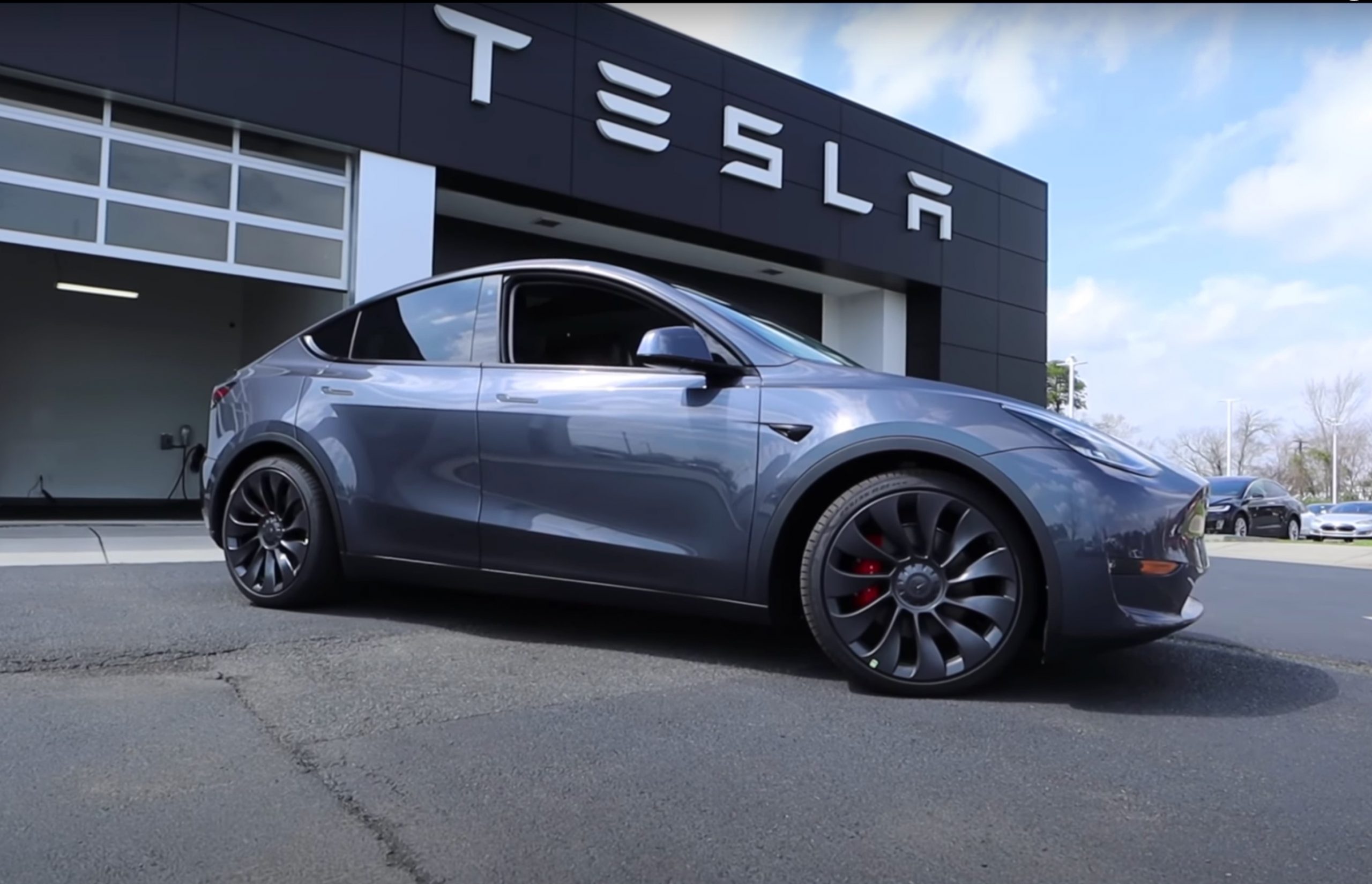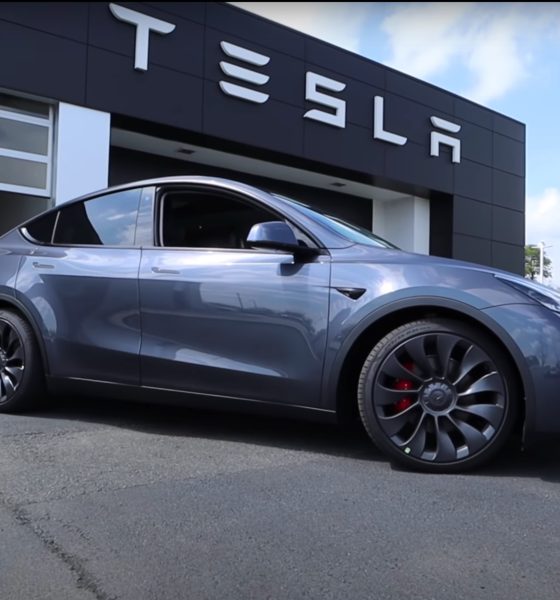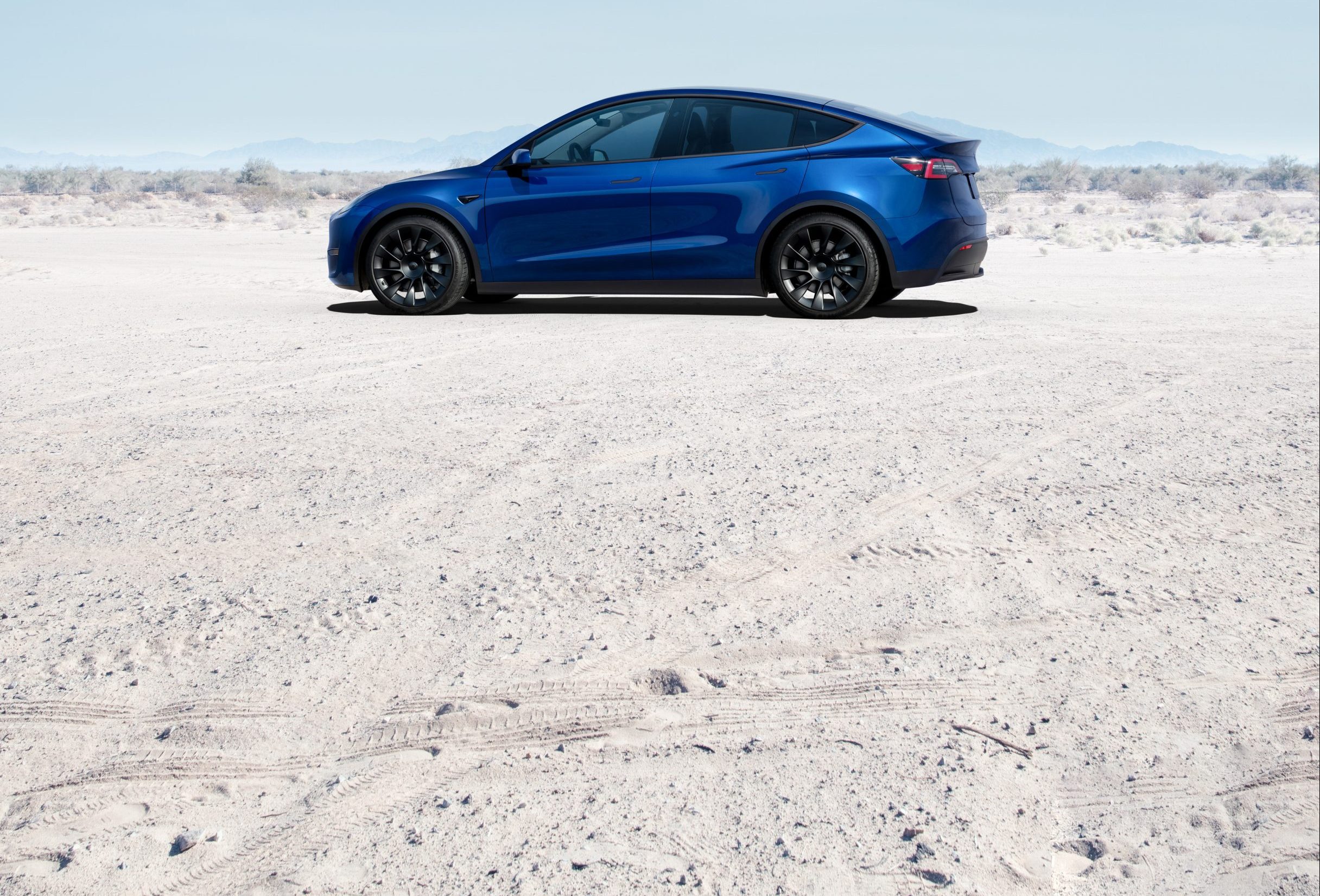

News
Why Tesla Model Y tax credit inclusion is good for some and bad for others
The Tesla Model Y complete lineup was recently added to the IRS list of qualifying vehicles that will give buyers a $7,500 tax credit. While it may seem like the company’s huge price cuts coupled with the tax credit would be good for everyone, it spells bad news for competitors that offer comparable EVs in the same category.
On Friday, the Model Y’s entire lineup was added to the list of qualifying vehicles after the U.S. Department of Treasury said, “The change will allow crossover vehicles that share similar features to be treated consistently.” The Model Y’s five-seat configurations did not reach the weight requirement to be considered SUVs and were put in another category that included “All Other Vehicles.” The price limit to qualify for the tax credit differs by $25,000: $55,000 for All Others, and $80,000 for SUVs.
Tesla Model Y’s complete lineup now qualifies for EV tax credits through Inflation Reduction Act
The inclusion is obviously a good thing for consumers, and events that transpired afterward are good for the investors. With Tesla’s $13,000 price cut on Model Y configurations in early January, the automaker had quadrupled the vehicle’s addressable market. At the same time, it had offered a substantial discount to some who could already justify the purchase, and if they were on the fence, there’s no denying that this inevitably won them over.
Lower prices mean more sales. The Model Y was already making waves in terms of Tesla’s total concentration of sales by model, and it has routinely competed with the Model 3 in various markets and won in many of them. However, the cuts meant Tesla would have to eat some of its margins, which were incredibly high, trailing only Ferrari and BMW in that category. Analysts and more hellbent investors who are obsessed with the company making as much money as possible may not have loved the price cuts, and Tesla obviously will not be making as much of a profit per vehicle. However, on Saturday, following the Model Y’s inclusion to the qualifying vehicles list, Tesla bumped up prices by $1,500.
Is it the $13,000 the automaker trimmed in January? No, absolutely not. But Tesla is already making considerable money on each unit, and the company’s industry-leading tech and Supercharging network are inevitably what will win consumers over, especially as the vehicle is still vastly more affordable than before. With Tesla reaching 1.313 million deliveries last year in 2022, the company has pulled out all the stops to get sales figures off to a fast start in 2023, with various discounts and other programs to push vehicles out the door.
Credit: Tesla
The old saying goes that one’s trash is another’s treasure, and in this instance, the competition is getting the trash while consumers are getting the treasure. Tesla’s massive price cuts and now qualifying tax credits make it a pretty simple choice for consumers. Without a doubt, one of the biggest issues with EV ownership, or at least in the broad consensus of the average consumer, is “Where will I charge my EV?” While this question still makes me chuckle to myself and want to say, “That thing you live in can do it. You know? Your house?” It’s much more complex than that.
A charging network is really what sets Tesla apart from the others. Some consumers may have been willing to spend a little extra to have the confidence that they could be surrounded by charging options, and Tesla is really the only automaker that has such broad options in terms of charging that it really doesn’t have a current competitor. If Tesla does end up opening up its network to other EVs, then this conversation changes. Of course, other companies out there have a robust infrastructure that is quickly growing. Still, these companies are often plagued by maintenance issues, rising costs, and a less-than-desirable experience.
Tesla is already controlling a majority of the U.S. market for electric vehicles, and there are worthy competitors. Volkswagen, Ford, and General Motors all have a wide variety of strategies in their plans to dethrone Tesla. Meanwhile, Polestar, Rivian, Lucid, and other startups are still working through their issues, which are usually money-related.
Tesla is well ahead of the curve, especially as it has already figured out mass production and launched a lineup of competitive vehicles with plans of more styles and applications to come. The inclusion of the Model Y, which CEO Elon Musk believes will be the best-selling car in the world one day, to the tax credit program only spells disaster for the companies attempting to catch up. Meanwhile, Tesla sits comfortably in the driver’s seat, and there does not seem to be any true comparison in current sight.
Disclosure: Joey Klender does own Tesla stock.
I’d love to hear from you! If you have any comments, concerns, or questions, please email me at joey@teslarati.com. You can also reach me on Twitter @KlenderJoey, or if you have news tips, you can email us at tips@teslarati.com.

News
Elon Musk’s Grokipedia surges to 5.6M articles, almost 79% of English Wikipedia
The explosive growth marks a major milestone for the AI-powered online encyclopedia, which was launched by Elon Musk’s xAI just months ago.

Elon Musk’s Grokipedia has grown to an impressive 5,615,201 articles as of today, closing in on 79% of the English Wikipedia’s current total of 7,119,376 articles.
The explosive growth marks a major milestone for the AI-powered online encyclopedia, which was launched by Elon Musk’s xAI just months ago. Needless to say, it would only be a matter of time before Grokipedia exceeds English Wikipedia in sheer volume.
Grokipedia’s rapid growth
xAI’s vision for Grokipedia emphasizes neutrality, while Grok’s reasoning capabilities allow for fast drafting and fact-checking. When Elon Musk announced the initiative in late September 2025, he noted that Grokipedia would be an improvement to Wikipedia because it would be designed to avoid bias.
At the time, Musk noted that Grokipedia “is a necessary step towards the xAI goal of understanding the Universe.”
Grokipedia was launched in late October, and while xAI was careful to list it only as Version 0.1 at the time, the online encyclopedia immediately earned praise. Wikipedia co-founder Larry Sanger highlighted the project’s innovative approach, noting how it leverages AI to fill knowledge gaps and enable rapid updates. Netizens also observed how Grokipedia tends to present articles in a more objective manner compared to Wikipedia, which is edited by humans.
Elon Musk’s ambitious plans
With 5,615,201 total articles, Grokipedia has now grown to almost 79% of English Wikipedia’s article base. This is incredibly quick, though Grokipedia remains text-only for now. xAI, for its part, has now updated the online encyclopedia’s iteration to v0.2.
Elon Musk has shared bold ideas for Grokipedia, including sending a record of the entire knowledge base to space as part of xAI’s mission to preserve and expand human understanding. At some point, Musk stated that Grokipedia will be renamed to Encyclopedia Galactica, and it will be sent to the cosmos.
“When Grokipedia is good enough (long way to go), we will change the name to Encyclopedia Galactica. It will be an open source distillation of all knowledge, including audio, images and video. Join xAI to help build the sci-fi version of the Library of Alexandria!” Musk wrote, adding in a later post that “Copies will be etched in stone and sent to the Moon, Mars and beyond. This time, it will not be lost.”
News
Tesla Model 3 becomes Netherlands’ best-selling used EV in 2025
More than one in ten second-hand electric cars sold in the country last year was a Tesla Model 3.

The Tesla Model 3 became the most popular used electric car in the Netherlands in 2025, cementing its dominance well beyond the country’s new-car market.
After years at the top of Dutch EV sales charts, the Model 3 now leads the country’s second-hand EV market by a wide margin, as record used-car purchases pushed electric vehicles further into the mainstream.
Model 3 takes a commanding lead
The Netherlands recorded more than 2.1 million used car sales last year, the highest level on record. Of those, roughly 4.8%, or about 102,000 vehicles, were electric. Within that growing segment, the Tesla Model 3 stood far ahead of its competitors.
In 2025 alone, 11,338 used Model 3s changed hands, giving the car an 11.1% share of the country’s entire used EV market. That means more than one in ten second-hand electric cars sold in the country last year was a Tesla Model 3, Auto Week Netherlands reported. The scale of its lead is striking: the gap between the Model 3 and the second-place finisher, the Volkswagen ID3, is more than 6,700 vehicles.
Rivals trail as residual values shape rankings
The Volkswagen ID.3 ranked a distant second, with 4,595 used units sold and a 4.5% market share. Close behind was the Audi e-tron, which placed third with 4,236 registrations. As noted by Auto Week Netherlands, relatively low residual values likely boosted the e-tron’s appeal in the used market, despite its higher original price.
Other strong performers included the Kia Niro, the Tesla Model Y, and the Hyundai Kona, highlighting continued demand for compact and midsize electric vehicles with proven range and reliability. No other model, however, came close to matching the Model 3’s scale or market presence.
News
Tesla Model Y Standard Long Range RWD launches in Europe
The update was announced by Tesla Europe & Middle East in a post on its official social media account on X.

Tesla has expanded the Model Y lineup in Europe with the introduction of the Standard Long Range RWD variant, which offers an impressive 657 km of WLTP range.
The update was announced by Tesla Europe & Middle East in a post on its official social media account on X.
Model Y Standard Long Range RWD Details
Tesla Europe & Middle East highlighted some of the Model Y Standard Long Range RWD’s most notable specs, from its 657 km of WLTP range to its 2,118 liters of cargo volume. More importantly, Tesla also noted that the newly released variant only consumes 12.7 kWh per 100 km, making it the most efficient Model Y to date.
The Model Y Standard provides a lower entry point for consumers who wish to enter the Tesla ecosystem at the lowest possible price. While the Model 3 Standard is still more affordable, some consumers might prefer the Model Y Standard due to its larger size and crossover form factor. The fact that the Model Y Standard is equipped with Tesla’s AI4 computer also makes it ready for FSD’s eventual rollout to the region.
Top Gear’s Model Y Standard review
Top Gear‘s recent review of the Tesla Model Y Standard highlighted some of the vehicle’s most notable features, such as its impressive real-world range, stellar infotainment system, and spacious interior. As per the publication, the Model Y Standard still retains a lot of what makes Tesla’s vehicles well-rounded, even if it’s been equipped with a simplified interior.
Top Gear compared the Model Y Standard to its rivals in the same segment. “The introduction of the Standard trim brings the Model Y in line with the entry price of most of its closest competition. In fact, it’s actually cheaper than a Peugeot e-3008 and costs £5k less than an entry-level Audi Q4 e-tron. It also makes the Ford Mustang Mach-E look a little short with its higher entry price and worse range,” the publication wrote.








